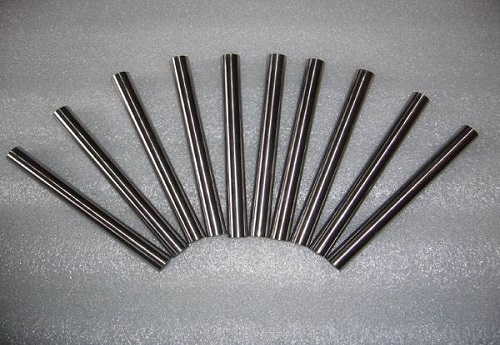Exploring High-Temperature Materials: Understanding Extreme Heat Resistance

Join Eric Smith at Stanford Advanced Materials for a discussion on high-temperature materials with Dr Alan Thompson. This programme examines materials that withstand extreme temperatures, including tantalum-hafnium-carbon alloys, tantalum carbide and hafnium carbide.
Discover the stability of these materials and the methods used to measure their melting points. The discussion covers their use in the aerospace and nuclear energy industries.
Are you interested in high-temperature materials? Send an inquiry or connect with us via our social media channels to receive further information.
Hello everyone, welcome to another episode of Stanford Advanced Materials! I’m your host, Eric Smith, and today we’re delving into the fascinating world of high-temperature materials. We’re going to discuss substances that can withstand the most extreme heat known to man. Joining me is Dr. Alan Thompson, a specialist in high-temperature materials. Thanks for joining us, Dr. Thompson!
Great to be here, Eric! This is a topic that really showcases the incredible feats of material science.
Absolutely. So, let’s jump right in. Back in 1930, researchers proposed that tantalum-hafnium-carbon alloys had the highest melting point at a scorching 4215 degrees Celsius. What makes these alloys so special?
The key here is their stability at extreme temperatures. The high melting point is largely due to the formation of a stable metallic sublattice structure. Hafnium, in particular, enhances carbon evaporation during the melting process, which reinforces the alloy’s structure.
That’s fascinating! But there’s been some debate over the years about the exact melting points and which compound actually holds the record. Can you explain that?
Sure! Tantalum carbide also has a very high melting point, around 3983 degrees Celsius, and some sources still cite it as having the highest. The exact values can vary due to experimental conditions and changes in composition during high-temperature tests. Hafnium carbide is another contender with a melting point of about 3928 degrees Celsius.
So, the measurements can differ based on a number of factors?
Exactly. Measuring such high melting points is challenging, and even small variations in composition can lead to different results.
And hafnium itself is pretty remarkable, right? It’s used in more than just high-temperature alloys.
That’s correct. Hafnium is highly resistant to both high temperatures and corrosion. It’s widely used in the nuclear industry, especially in control rods and protective devices due to its large thermal neutron capture cross-section.
That’s really interesting. Before we wrap up, are there any future trends or developments in this area that you’re particularly excited about?
Absolutely! Ongoing research is exploring new alloys and materials that could potentially withstand even higher temperatures. These developments are particularly exciting for industries like aerospace and nuclear energy.
Thanks so much, Dr. Thompson, for sharing your insights on these incredible materials. It’s been a really enlightening discussion.
My pleasure, Eric. It’s always a joy to talk about these cutting-edge advancements.
And to our listeners, thank you for tuning in to Stanford Advanced Materials. If you enjoyed this episode, be sure to subscribe and leave us a review. We’ll be back with more exciting topics next time. Take care, and keep exploring the amazing world of materials!

 Bars
Bars
 Beads & Spheres
Beads & Spheres
 Bolts & Nuts
Bolts & Nuts
 Crucibles
Crucibles
 Discs
Discs
 Fibers & Fabrics
Fibers & Fabrics
 Films
Films
 Flake
Flake
 Foams
Foams
 Foil
Foil
 Granules
Granules
 Honeycombs
Honeycombs
 Ink
Ink
 Laminate
Laminate
 Lumps
Lumps
 Meshes
Meshes
 Metallised Film
Metallised Film
 Plate
Plate
 Powders
Powders
 Rod
Rod
 Sheets
Sheets
 Single Crystals
Single Crystals
 Sputtering Target
Sputtering Target
 Tubes
Tubes
 Washer
Washer
 Wires
Wires
 Converters & Calculators
Converters & Calculators
 Write for Us
Write for Us
